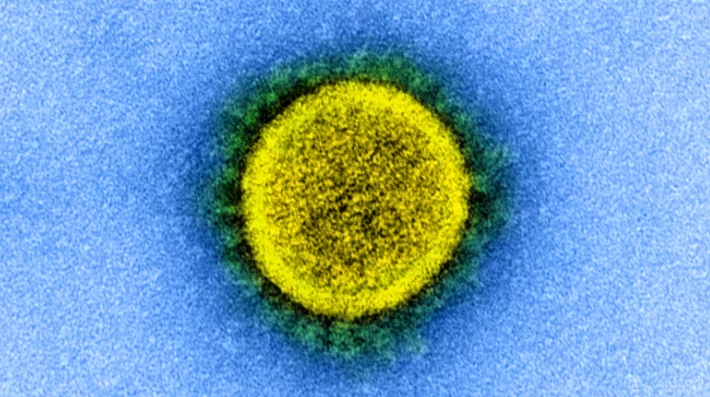Highly mutated COVID virus variant BA.2.86 showing up in multiple countries

Handful of cases from Israel, Denmark, U.S., U.K.; none yet in Canada
A highly mutated variant of the virus behind COVID-19 has popped up in multiple countries, but scientists aren’t yet sure whether it will help fuel a fall wave of infections or simply fizzle out.
BA.2.86 was deemed a variant under monitoring by the World Health Organization on Aug. 17. Though only a handful of samples exist, its emergence across several continents since it was first identified in late July, coupled with its unusually high number of mutations, has put COVID watchers on high alert.
In the ever-growing SARS-CoV-2 family tree, BA.2.86 likely stemmed from BA.2, an Omicron descendent that helped spark a wave of infections in spring 2022. So far, it’s been identified at least six times in four countries, including Israel, Denmark, the U.S. and the U.K., all in the span of mere weeks. (There are no BA.2.86 detections yet in Canada, though scientists are actively monitoring this lineage, the Public Health Agency of Canada told CBC News on Monday.)
This Omicron offshoot has more than 30 mutations relative to BA.2 in its spike protein — the structures on the outside of each crown-like coronavirus that help it enter human cells — and is dramatically different in terms of its number of mutations when compared to either the original virus or the XBB strain targeted by upcoming fall vaccines.
“It is unusual for [this virus] to change so significantly and develop 30 new mutations,” said Morten Rasmussen, a senior researcher at Denmark’s Statens Serum Institut (SSI), in a statement.
“The last time we saw such a big change was when [Omicron] appeared.”
While that assessment may seem grim given how Omicron altered the course of the pandemic and drove infection rates to new heights, scientists have been quick to note that BA.2.86 may not live up to its predecessor.
“The most likely scenario is this variant is less transmissible than current dominant variants, and so never spreads widely,” noted U.S.-based virologist and researcher Jesse Bloom in a series of social media posts discussing BA.2.86’s evolution.
“However, occasionally a variant has a sufficient combination of antigenic advantage and inherent transmissibility to spread widely. Whether this will happen can only be determined by waiting to see if more sequences are identified.”
Significance of mutations ‘difficult to predict’
The significance of mutations is “sometimes difficult to predict,” agreed virologist David Evans, a professor in the departments of medical microbiology and immunology at the University of Alberta in Edmonton.
Evans said extensive mutations in the virus’s spike protein aren’t entirely surprising, but rather a way for SARS-CoV-2 to continue evading the front-line defences of the human immune system.
That could fuel more infections, even among people who’ve already been vaccinated or previously sick, but likely wouldn’t lead to anything remotely close to the mortality seen early in the pandemic, Evans said.
“I think we have to be careful about the breathless discussion about every new strain and really look at the data first,” he added.
“Is this much ado about nothing?” questioned Dr. Isaac Bogoch, an infectious disease specialist at the University Health Network in Toronto. “Or will this end up taking off and being a dominant sublineage?”
The answers aren’t yet clear.
A risk assessment from U.K. health officials said it’s tough to know the combined effect of BA.2.86’s large number of mutations, though it does likely means a “significant” change to the virus and how it operates.
The U.K.’s single known case was identified in a patient who was tested at a London hospital on Aug. 13, “with no recent travel history,” suggesting some level of community transmission.
The risk assessment there said it likely established international transmission as well, given the rapid appearance of samples in multiple countries.
U.S. health officials are also monitoring BA.2.86, which appeared once in Michigan in an older adult with mild symptoms who wasn’t hospitalized during their illness, according to U.S. media reports.
Meanwhile, three other cases identified in Denmark weren’t linked, officials in that country said, adding it’s “still too early to say anything about the severity and contagiousness of the new variant.” Denmark’s SSI said it is also in the process of researching and growing the virus variant to test it against antibodies.
None of the preliminary cases had symptoms “other than those normally seen” in the course of COVID-19, noted the SSI’s executive vice-president for epidemiological infectious disease preparedness, Tyra Grove Krause, in a statement.
“We also have a strong expectation that the vaccines — also with this variant — will provide good protection against serious disease.”
Variant emerging amid new COVID wave
That’s all reassuring, Bogoch said, though he stressed it’s still too early to know what this variant has in store. “We know a lot about the genetics,” he said, “but we don’t know a lot about transmissibility or clinical presentation.”
The variant is emerging as much of the world, including Canada, appears to be entering a fall COVID wave. Another Omicron subvariant, EG.5, is now dominant in the U.S. and also rising elsewhere, potentially fuelling more infections.
But Bogoch stressed that the immunity landscape has changed dramatically over the years, since nearly everyone here in Canada has been exposed through vaccination, infection, or both — meaning most variants are now less likely to fuel major surges of serious illness.
“We’re dealing with a different Canada, and a different world, now,” he said.
Related News
Carney warns of ‘tough days ahead’ as tariffs make U.S. recession ‘likely’
Donald Trump’s latest round of tariffs is only a few days old, but the havocRead more
Top American scientists just lost their jobs. Canada is rolling out the welcome mat
Many top scientists in the U.S. are now out of a job. Health Secretary RobertRead more
